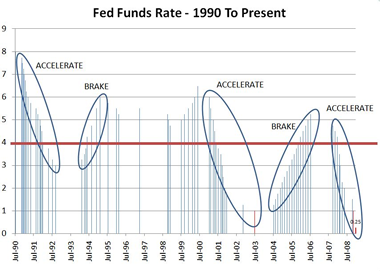But I thought it was okay
Dysfunctional choices are not always apparent to the chooser until the unintended results become apparent. The dysfunctional chooser is one who makes a choice based on:
- a similar situation, but with critical differences
- a new situation with faulty information
- an expectation based on wanting an outcome rather than the ability to discern the likely outcome
- an emotional aversion to another, better choice
- outside pressure to make the choice one way rather than another
- willing to take a risk knowing that failure is likely, but hoping for success
- Similar, but different... I hit a 200 yard fairway shot to the middle of the green last week... critical difference: no water in front of the green and no sand alongside... and the ball only flew 175 yards and rolled the remaining 25 yards. So, I decide that I can make the shot to the green this time... and it ends up in the water.
- I'm playing a course I haven't played before. I know I am at the 200 yard marker and figure I should be able to get pretty close to the green, so I take out my 5 wood and hit away. Only problem is the water in front of the hole isn't visible and I didn't check the course layout on the card... and it ends up in the water.
- I can score less than 90 strokes if I make it on the green from 200 yards and sink the putt. I really want to break 90, so I hit away and... the ball goes in the water, I get a penalty shot from in front of the water, mis-hit the next shot back into the water. Take another penalty shot. Hit the next shot slight over the green, chip on the green and put the ball in the hole after three putts... and score 97.
- I know I can get on the green with two short shots, but I'm a manly-man and that's a girlie-man approach. So I hit the 5 wood shot... into the water.
- I know I probably will not get on the green with a 200-yard shot over water, but the guys I'm playing with all say they would go for it... so I do... and the ball goes in the water.
- I know that it's unlikely I'll get the ball on the green... in fact, I know I'll probably end up with a bad shot into water or sand... but it would be "sweet" to make that 200-yard shot... so I do... and the ball ends up in the water.
Interestingly, had I actually made the shot, I would then reinforce the faulty thought processes that would lead me to attempt the shot every time a similar situation arose. I would ignore my failures and view my failures as aberrations. Oh, wait, I guess I do that. Well, golf isn't all that important.
The problems in our lives occur when we make dysfunctional choices from which we can't walk away.
We have a child with a woman to whom we are not married. She wants money to raise the child. So we shoot her for asking and beat the child to death so there will be no support payments. Okay, so there are no support payments (our goal), but we go to jail for the rest of our life and destroyed our DNA heir in the process. That's dysfunctional.








